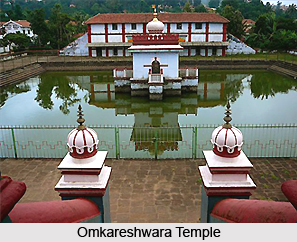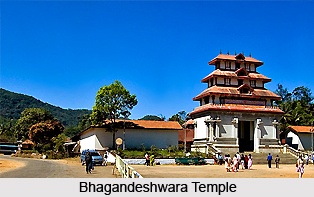 Tourism in Kodagu district in Karnataka is a most enchanting experience. There are a number of places of tourist interest located here which are of diverse interest, such as temples, forts, monuments, amusement parks etc. Some of the most famous ones are discussed below.
Tourism in Kodagu district in Karnataka is a most enchanting experience. There are a number of places of tourist interest located here which are of diverse interest, such as temples, forts, monuments, amusement parks etc. Some of the most famous ones are discussed below.
Pilgrimage Tourism In Kodagu District
Omkareshwara Temple at Madikeri was built by Lingarajendra II in 1820. It has been constructed in the Indo- Saracenic style with a dome on the roof and minarets at the four corners. The Shivalinga was specially brought from Kashi.
The Igguthappadevara Betta, in the proximity of the Aiyengeri forest near Kakkabbe, is a lofty peak and is a pilgrim centre for the Coorgs in particular and other Hindus in general. Worshippers from all over the district congregate at the shrine and offer poojas and sometimes "Tulabhara", weighing oneself with rice or coconuts and offering the same to the deity along with some money. The place is highly venerated for the presiding deity Subramanya, the patron God of Coorg. Kakkabbe is at a distance of 45kms from Madikeri. Private buses ply from Madikeri and Virajpet.
Bhagandeshwara Temple is a well known pilgrimage centre situated at a distance of 39 Kms from Madikeri. A large number of tourists visit Bhagamandala particularly during the Thula Sankramana jatra and the entire Thula month (October-November). The Bhagandeswara temple complex though said to have been built by the Cholas prior to the 11th century, follows the gabled roof style of the Kerala temple architecture common on the west coast. There are four temples in the temple complex of Ishwara, Subrahmanya, Mahavishnu and Ganapathi. The Ganapathi temple is in the outer prakara and the other three are in a line in the inner prakara. The Bhagandeswara temple has a simple structure consisting of a square garbhagriha with a small ardhamantapa. The cone shaped shikhara has the stupika and the golden pinnacle donated by Doddaveerarajendra.
Bhagamandala is a famous Honey marketing centre, the bee rearing centre here is called Madhuvana and possesses a rare museum of objects related to bee keeping and is the only such centre in the entire state. There is an Apiculture Training Institute run by the state government. There are several private and government buses plying from inside Kodagu district and other districts and neighbouring states to Bhagamandala and Talacauvery.
The Triveni Sangam is a sacred site for the Hindu situated at Bhagamandala, at the confluence of three rivers- Kaveri River, Kannika and a mythical river Sujyothi, to form the `Triveni Sangam`. It is 29 km from madikeri and 50 km from virajpet.
 Leisure Tourism In Kodagu District
Leisure Tourism In Kodagu District
A beautiful fort and palace are found located at Madikeri. The fort stands on an elevated ground and is visible from any part of the town. The original mud fortress was rebuilt in stone by Tipu Sultan. The ground plan of the palace is an irregular hexagon with circular bastions at six angles. The palace situated inside the fort was rebuilt by Lingarajendra II in brick and mortar between 1812 and 1814. The palace is a two-storied structure of a square form having a small court in the centre. It is quite after the European fashion presenting a very handsome front of about 110 feet length.
The Raja`s Seat at Madikeri is a small, square mandapa in brick and mortar. It has four pillars that are bridged by arches and enhanced by beautiful surroundings. This lovely spot was a favourite place of recreation for the Rajas and hence was permanently associated with them. It is built on a high level ground with a commanding view of the cliffs and valleys to the west. Early in the morning as the sun is just rising in the east, the mist shrouded valley below offers a rare sight. The golden light of the setting sun is splendour to watch. There is also an added attraction of the Toy Train for children.
The Gandhi Mantapa at madikeri is situated on the way to the Raja`s seat, to the left. It has been built on the sacred mortal remains of Mahatma Gandhi in 1956. There are two royal tombs at Madikeri. Veerarajendra began the construction of the royal tomb on a hill commanding a view from all directions to the north of Mahadevpet. The work was completed by his younger brother Lingarajendra. Veerarajendra`s grave is by the side of his queen`s. At a short distance is the tomb of Lingarajendra built by his son Chikkaveeraraja in 1820 AD. All these tombs are built in the Indo-Saracenic style, with a wide square, a handsome dome in the centre and four turrets in the angles.
Kodagu district is thus full of interesting places for those looking to visit the district.



















